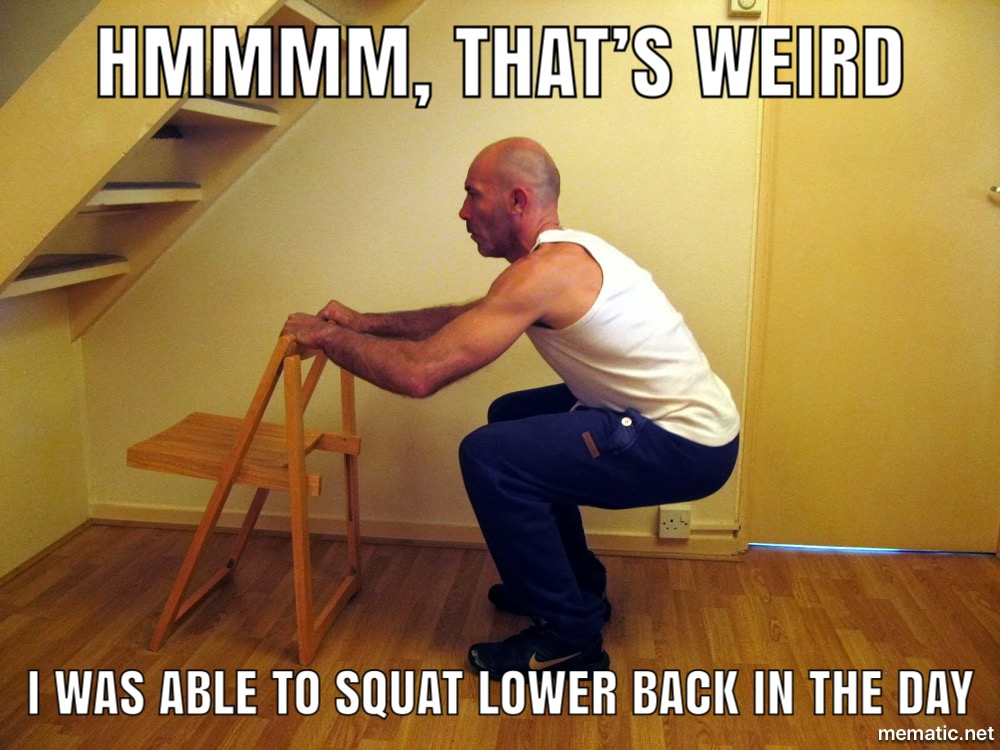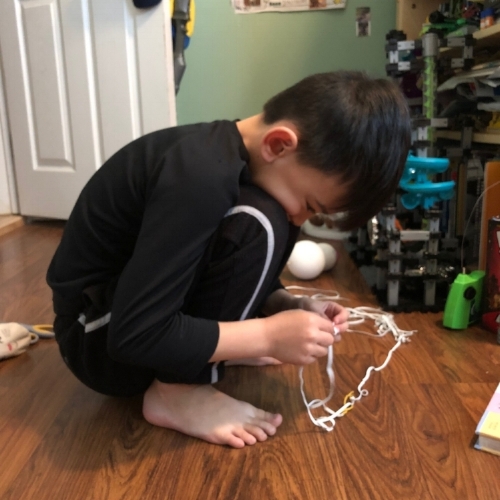
21 May Could Your Squat Be a Predictor of Low Back Pain?
I don’t hesitate to say that we live in the best country in the world. We enjoy all the comforts and convenience of modern technology, the best healthcare, access to the best food, the best medical research and the best education. Americans by far, are the most health conscientious people in the world. Our training and recovery methods are some of the most robust.
Some of us may even have memberships to several fitness and training ideologies such as Crossfit, Pilates, Yoga, SoulCycle, Jiu Jitsu and Orange Theory to strike the balance between strength and limber-ness.
But why is it that, with all this knowledge and access to staying healthy and fit, Americans have one of the highest incident rates of low back pain in the world?
The Scary Sh*t
The statistics on low back pain are astonishing. According to the National Institutes of Health (www.nih.gov) and American Physical Therapy Association (www.apta.org), nearly 80% of Americans will experience low back pain (LBP) at some point in their lifetime. So … if you’re the 20% minority, congratulations – you can stop reading here and please feel free to share your secret with us in the comments section below.
Also, nearly 1 out of 3 adults will tell you that they have had low back pain in the last 3 months.
But there’s more …
Of the 80% who experience low back pain, 60-80% will have another episode of low back pain within 2 years.
Low back pain is now the third ranked most burdensome injury in the United States only behind ischemic heart disease and chronic obstructive pulmonary disease (COPD). It also accounts for the most days of lost work annually and is the second most common reason for visits to the doctor.
In contrast, in non-industrialized countries like Russia, Ghana, India, Mexico, China and South Africa, the impact that low back pain has on daily life is significantly lower. How much lower? Almost 50% lower according to the results of a study published in 2015.
The question is … why?
People of industrialized societies tend to have less physical jobs so we can assume that there is less wear and tear on the body with aging. And because we exercise regularly, we can assume that our bodies are stronger and more resilient.
So Why is the Incidence of Low Back Pain That Much Higher?
A reason could be that we don’t take ourselves to end range positions enough. Raise your hand if you know someone who suffers from lumbar stenosis, anterior or front of the hip pain, pelvic floor dysfunction or someone who is unable to touch their toes because of “tight hamstrings”.
Did you know that a majority of low back issues are caused by a lack of hip mobility? In regards to low back pain, one position that comes to mind is … the Third World Squat (TWS) or Asian Squat (aka – deep squat where your butt almost touches the ground and the feet rest flat).
The TWS is important because it is an expression of triple flexion mobility. It is an indicator of how well the hips, knees and ankles can bend. Some would also argue that it is an expression of quadruple flexion, an indicator of how well the low back is able to flex.
Either way you want to look at it, a byproduct of end range hip flexion (knee to chest) is lumbar flexion. Flexion of the lower back places the joints of the spine into what is known as a gapped, open and decompressed position. Doesn’t that description of the joint relationships in the lower back just sound good? This is why the universal stretch that we tend to instinctively do in order to alleviate low back pain are ones that resemble Child’s Pose or to bring our knees to our chest.
Also, taking yourself into end range decreases stiffness from developing by promoting the production synovial fluid which keep the joints lubricated and it also maintains the guided elasticity of the ligaments/capsules that protect those joints.
But … I have never been flexible
Before you start to say, “I have always been an un-flexible person” (personality traits aside) or “I have never been able to do that!”, think again.
We were made this flexible and bendy. But as we age, our muscles and connective tissue start to shorten and then start to take the shape of the positions and furniture that we spend a majority of our time in at school, work or while Netflixin’ and chillin’. This phenomenon is called “adaptive shortening”, which is just another way of saying “use what you’ve got or lose it”.
In underdeveloped areas of the world, the TWS is a necessity due to lack of toilets and furniture. Floor-based activities such as gathering around socially to enjoy a meal or play a game of cards could be done for long periods of time in the deep squat.
As an Asian-American (or ‘Twinkie’ according to my mom), I grew up in a home with extended family and remember how my grandparents would sometimes decide to squat in the kitchen to chop food instead of standing by the counter or sitting at the kitchen table. It wasn’t because they were preparing a lot of food and we didn’t have space. It was because it was a position that was familiar to them based off their previous necessity to adapt to their activities of daily living and environment in China and Malaysia.
Putting cultural, adaptive and social habits aside, children also play in this position. Kids love to play in this position because it is extremely stable yet it allows them to play and move with their toys. If you have kids, watch them the next time they play on the floor. If you don’t have kids, come over and observe mine. They have the amazing ability to reach and transfer weight forward and side to side in the TWS. And how often do we hear kids complain of low back pain?
Take a look at these pictures for for a closer look at the movement nutrition that the TWS provides
Starting from the ground up:
- Feet are flat and parallel
- Knees are fully bent
- Hips are fully bent
- Low back is flexed
There may be some of you who have read this far that may have the opinion that this is an unsafe position to put your spine into. Due to the excessive rounded curvature of the low back, it would be irresponsible for me to recommend that you squat this way with a heavy barbell or weight loaded on your shoulders. But this position against the force of bodyweight or a light load are fair game.
What Can I Do?
Before you click off this page, I personally challenge you to spend just 1 full minute in the TWS. You may be surprised what you feel or what you start to lose feeling of.
Some awesome movement and mobility minds like Kelly Starrett, Ido Portal and Katy Bowman recommend accumulating at least 10 minutes of the TWS daily.
Gradually build up your time, use something to hold on to if you need to get started AND don’t forget to keep normal breathing. Heck, make this a game with your kids. If you are competitive like me, there’s a good chance that you won’t be beating them at this contest anytime soon.
Your mobility won’t change overnight, but how often does anything that gives you instant gratification result in long lasting change?
I’d love to hear how you’re doing with this challenge AND remember that you can always do something today to make yourself better than you were yesterday.




